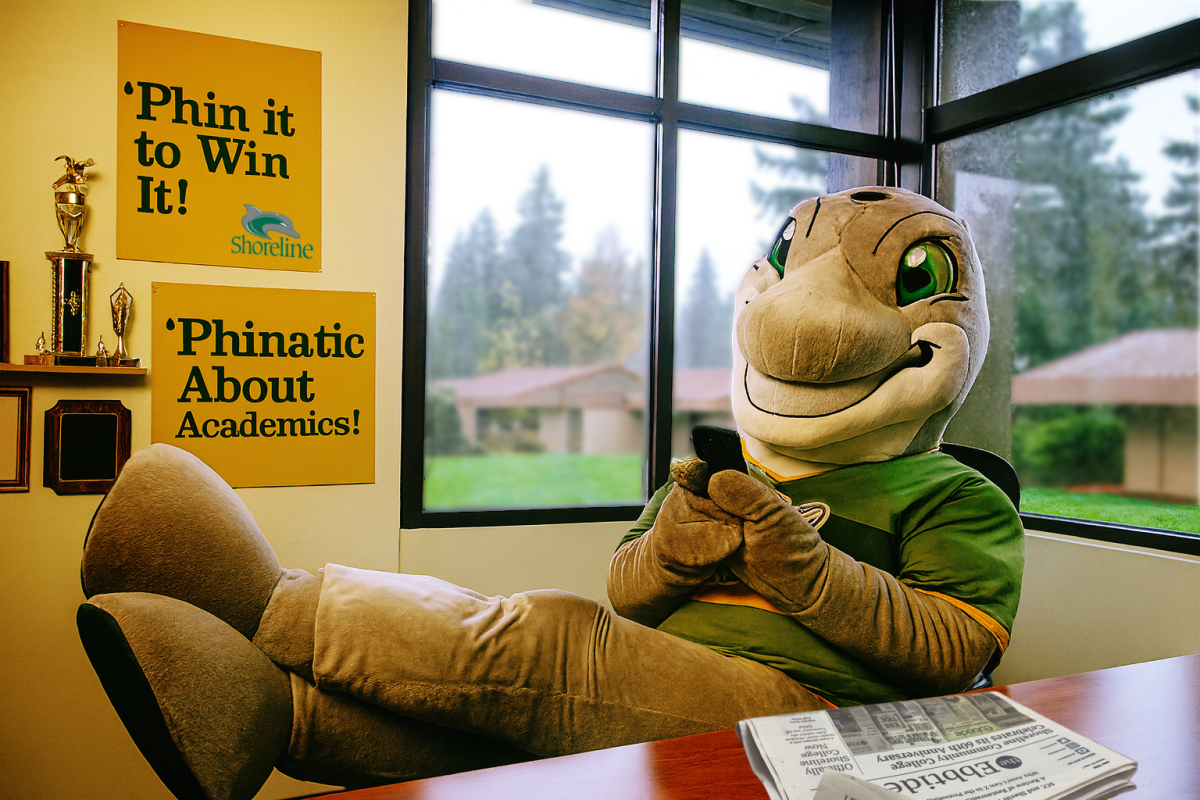Review: ‘The Vast of Night’ Rekindles Fascination for the Unknown
June 12, 2020
Some of my earliest memories involve dining at Mr. Bills, a 1950s-themed restaurant in the Broadview neighborhood which sat just off of Aurora Avenue.
Its onslaught of pink neon and Americana decor had a strong impression on me. Meanwhile, I knew the nearby Bitter Lake once housed Playland, a long- defunct amusement park which existed in my mind only as photographs.
Of course, I had never lived in the ‘50s. But perhaps because these two settings bridged the gap between the era’s pop culture and local living, I was able to muster a realistic sense of what the average midcentury existence might’ve actually felt like: a simple, no-frills way of life that was similar to my own yet inherently antiquated.
“The Vast of Night” captures that sense.
Plot
At it’s heart, “The Vast of Night” is a good, old-fashioned UFO flick.
Released May 15 by Amazon Studios, The slow-burning science fiction tale evokes a realistic slice of small town America as tech-savvy high school friends Everett Sloan and Fay Crocker navigate a string of bizarre circumstances on a fateful night in ‘50s New Mexico.
“The Vast of Night” is the major directorial debut of Andrew Patterson, who reportedly accomplished the feat on a minimal budget.
The film boasts dark, dim lighting with no intention of rubbing beautified nostalgia in the viewer’s face (a pitfall that many period flicks often find themselves succumbing to). Instead of flashy costumes and cliches, you’re treated to a realistic excursion back in time through the use of believable, quick-moving dialogue, historically accurate set designs and understated acting.
It’s clear that Everett and Fay are passionate about up and coming technology: The beginning of the film sees the pair enthusiastically testing a tape recorder on the occupants of parked cars at the local high school basketball game. Next, they walk for awhile as Fay animatedly quotes science magazines that describe the world’s latest high-tech advancements.
Its themes of technology don’t stop there: The two soon part ways to go to their respective night time jobs, where Fay works as a switchboard operator and Everett assumes his position as the town’s late-night radio host.
But when a strange sound emerges over Fay’s wires, she promptly calls Everett to share the discovery and patches it across the airwaves to the radio station at his request.
In a makeshift attempt to solve the mystery, Everett broadcasts it for the town to hear while asking listeners to call in if they recognize it. One man does; his name is Billy, and he insists that he heard the same sound associated with a secretive project he caught wind of during his military days.
From that point on, the two friends take matters into their own hands in an effort to look for answers — while the questions appear to reside in the sky.
“The Vast of Night” couldn’t be more timely: Within just two weeks of its release, the U.S. rekindled manned spaceflight, making the film a perfect companion piece to the sentiment of extending goodwill beyond our planet.
Production
Right from the opening scenes, viewers get a taste for the look and feel of the film: Its wide shots, dim lighting and hazy color palette evoke a dreamlike vibe, with an otherworldly ambiance almost comparable to Jeffrey St. Jules’ surreal sci-fi musical “Bang Bang Baby” starring Jane Levy.
A major highlight is the use of long, continuous takes to make the scenes feel as though they’re unfolding in real time. From the moment Fay sits down at the switchboard all the way through to when she calls Everett at the station, the camera is focused on her face and the evolution of her perplexed emotions alone.
Such cinematography proves that rapid cuts are by no means necessary to keep a modern audience engaged. Patterson let the camera take its time, and it did wonders for the pacing.
The film itself almost feels claustrophobic as a result of its consistently dark lighting and low-to-the-ground camera angles (in an early scene, viewers are virtually led into a cramped attic space above the high school gym where Everett’s radio know-how is summoned).
A Nod to the Classics
Clearly, Patterson is a fan of classic sci-fi. In fact, the entirety of “The Vast of Night” is framed as a television episode of the “Twilight Zone”-inspired “Paradox Theater” (not to mention how the film’s fictional town of Cayuga shares its name with the former “Twilight Zone” production company).
But the influence is felt beyond homages. “The Vast of Night” pays tribute to the days when radio dramas populated the airwaves. For instance, As Billy recounts his on-air military anecdote to Everett, the screen fades to black —as if to pay tribute to a time when audiences had to picture stories with their imagination instead of witnessing it on a screen.
The sequence serves as a powerful reminder of what can be achieved by the spoken word, giving truth to the sentiment “less is more.” In the same way, the use of tension in “The Vast of Night” harkens back to the likes of 1974’s “Jaws” — where the fear was implied, not shown.
Amazon Prime should be applauded for taking a risk. In this case, the risk was plain old originality.
Not unlike “Close Encounters” and “2001: A Space Odyssey,” “The Vast of Night” deserves its rightful place in the hall of cinematic classics that ponder the timeless question: “Are we alone out there?”






